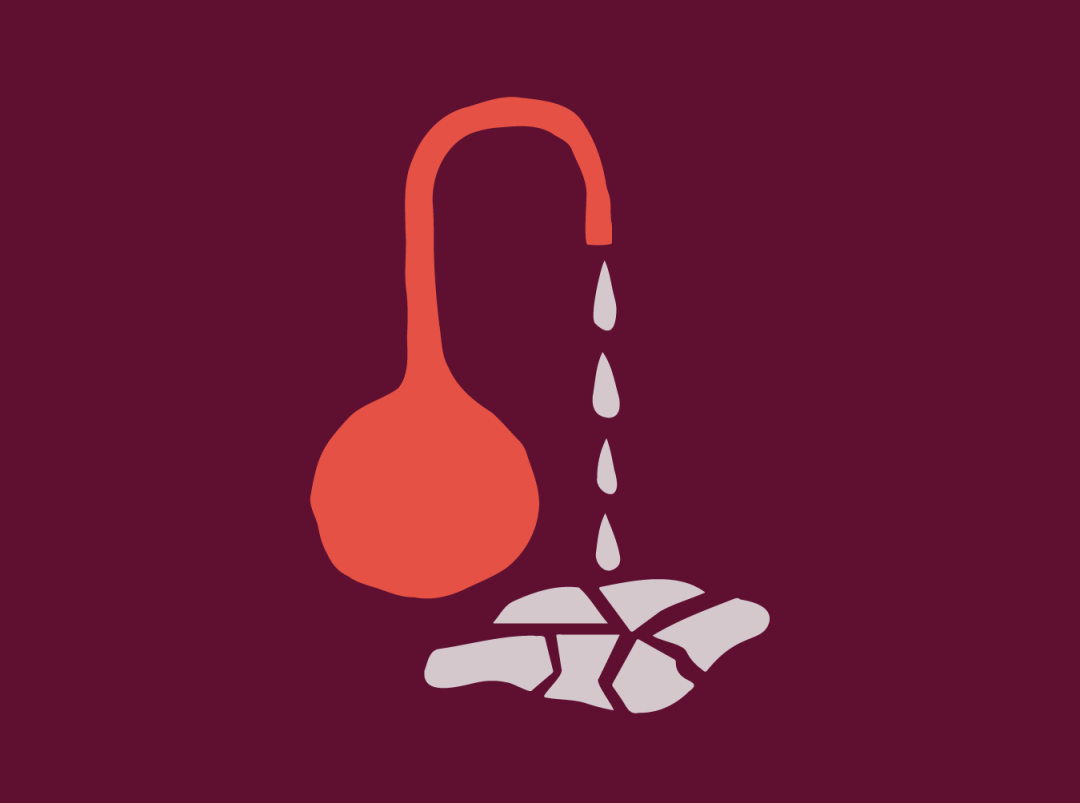#explainer
Endometriosis Isn’t Just a “Painful Period Disease”
health
·5 min read

by Morganne Skinner | 06/08/2022
Be honest — what did you think when you first heard the word endometriosis? If your immediate reaction was one of confusion, you’re not alone!
Until I was diagnosed with endometriosis, even as a nurse, I couldn't tell you more about the condition than it “has to do with painful periods.” It wasn't until my entire life changed (thanks, endo!) that I realized just how devastating it can be.
While endometriosis is very common, affecting one in ten women, many people still haven’t heard of it — or, if they have, they don’t really know what it is. To be fair, there’s a lot of misinformation out there: Some researchers and doctors still adhere to an outdated definition of the disease, which is why this older information is still taught, published, and shared online. This makes it incredibly challenging for a person with endometriosis to know what’s true, what’s outdated, and who to trust.
so, what is endometriosis, exactly?
Endometriosis, commonly referred to as “endo”, is a chronic inflammatory condition where tissue similar to that which lines the uterus is found outside of the uterus. Many people (doctors included!) believe that endometriosis tissue is the same as the endometrium (tissue that lines the uterus). The names are pretty similar, after all.
When endometriosis was first identified, scientists thought the tissues were the same (hence the similar names). More research has since taught us that the tissues are actually pretty different — and this difference just so happens to be *super* important (read: don’t skip ahead!). Endometriosis tissue, unlike the endometrium, produces its OWN estrogen.
Endometriosis is strange for a couple of reasons: one is that no one knows what causes it, and two is that no one agrees on its definition or how to treat it. But don’t worry — even though there are many unknowns, research has helped us take some steps in the right direction! We do know that there is a genetic component. For example, if you have a close relative (e.g. your mom) that has endometriosis, your risk for it increases seven times.
We also know that there is immune dysfunction and progesterone resistance. With endometriosis, abnormal tissue is found in places it shouldn’t be. Normally, cells in our immune system would clear those up. But in people with endometriosis, this doesn’t happen.
Normally, progesterone balances out estrogen. Estrogen is responsible for building up our endometrium, telling our uterus to contract, and even strengthening our immune system. Progesterone has the opposite effect — it maintains our endometrium, relaxes our uterus, and suppresses our immune system.
Endometriosis cells also respond to estrogen — so when estrogen increases and gives the signal to “build up,” endometriosis cells respond to it by growing. However, these cells just don’t care what progesterone has to say! Meaning, progesterone doesn’t balance out estrogen the way it should, so the tissue just keeps on growing.
symptoms of endo
You may have heard that endometriosis is a “painful period disease.” Believe it or not, that’s not quite true. People with endometriosis may or may not have painful periods. They may not even menstruate! Endometriosis has been found in males, in utero, females before menstruation, and during menopause.
Endometriosis can cause pain, lead to scar tissue and adhesions, and can even grow into organs. Some symptoms include:
Bloating
Heavy and/or painful periods
Pain with sex, tampons, and/or pap smears
Digestive issues like diarrhea or constipation
Abdominal and/or pelvic pain
Infertility
Depression and/or anxiety
Chest pain
Fatigue and brain fog
If you’re reading this, you’re probably thinking, Wow that’s a lot! You’re right. It is a lot! And you’ve probably noticed a common theme: pain.
One of the most common denominators of endometriosis symptoms is pain. However, because endo can vary so greatly from person to person, some people may not experience pain at all! Some symptoms are due to where lesions are located, like chest pain, and some are due to chronic inflammation, like fatigue.
how do I know if I have endometriosis?
Part of what makes endometriosis so unique is that it affects everyone differently. One person may have no physical symptoms, but may struggle to get pregnant. Another person may have extremely painful, debilitating periods and no other symptoms. Another person may have “regular” periods, but terrible digestive issues like chronic bloating and diarrhea.
90% of women first present to their doctor with GI issues when they have endometriosis. Because of that, doctors may diagnose the condition as IBS, when really the symptoms are due to endometriosis.
getting an endo diagnosis
Endometriosis has been found in every part of the body, including the bowel, lungs, heart, bone and brain. And, to make matters worse, these lesions may not show up on imaging. The only way to really truly diagnose the disease is through a surgical biopsy. Approximately two out of three people with endometriosis are initially misdiagnosed, and it takes anywhere from four to eleven years to reach the correct diagnosis. For me, it took 15 years (and 19 doctors in the last two years) to be diagnosed.
Access to surgery can be a huge barrier for many in getting diagnosed with endometriosis. It cannot be diagnosed by a lab test, urine test, stool test, or any type of imaging. It also shares symptoms with many other conditions, like IBS, dysmenorrhea, adenomyosis, and interstitial cystitis. It also does not have a “visual presentation”, meaning that a doctor cannot diagnose the condition or suspect it just by looking at a patient.
All of these things make getting diagnosed with endometriosis very difficult and often requires people to advocate for themselves. One survey found that 90% of people with endometriosis are not believed and their symptoms dismissed by both family members and doctors. Another study found that doctors assume “women’s problems” are caused by emotional factors (e.g. depression). Sadly, I can attest to this, as I was repeatedly told that I was stressed, depressed, and just “needed to relax” before finally hearing the validating words: “you have endometriosis.”
when should I be worried?
As a nurse, I am always concerned when a patient tells me that a symptom is new, worsening, or bothersome. Here are some red flags to be aware of:
Period pain that does not respond to rest or medication
Pain that interferes with your normal activities
Pain accompanied by nausea, vomiting, or diarrhea
If you find yourself experiencing these symptoms, it’s best to go and talk to your doctor about them. It may be endometriosis, or it may be something else entirely. But listen to your intuition, because pain is never normal — it is a sign that something is wrong.
Have you ever struggled to get an endometriosis diagnosis or find an endo-support community? Let us know in the comments!
Morganne Skinner, BSN, RN is a registered nurse, freelance nurse writer, and fertility awareness educator. She is the owner of the fertility awareness business Fertility Defined. She has seven years of nursing experience in rehabilitation, communicable disease, maternal child health, and in the surgical-trauma ICU. She served as a Peace Corps Volunteer for two years in rural Zambia, where her passion for public health and women’s health grew. She specializes in writing on topics such as health literacy, cultural communication, fertility, and women’s health.
by Morganne Skinner


